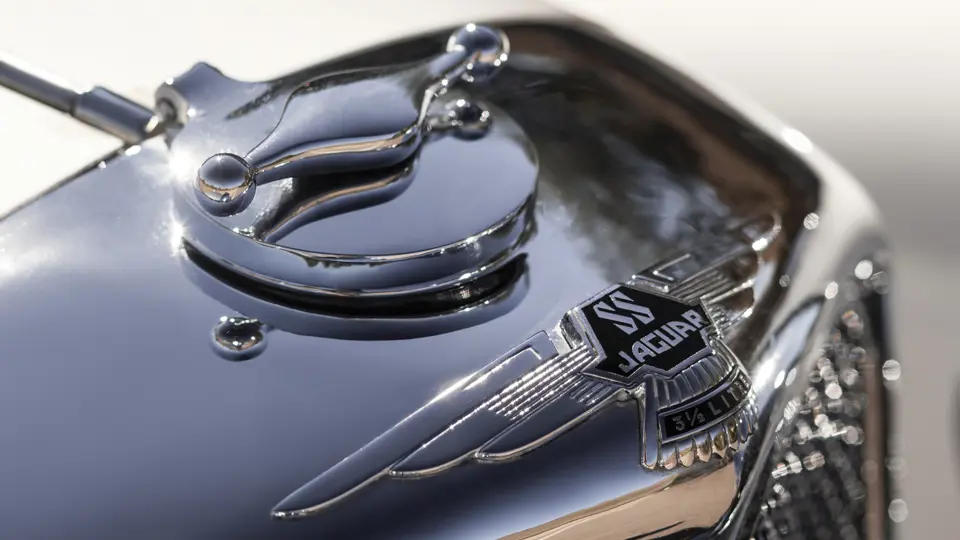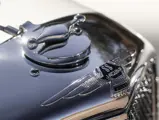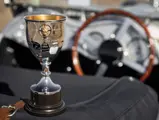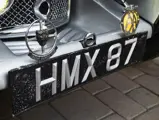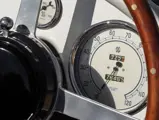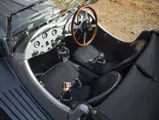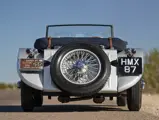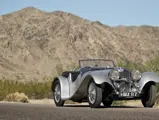
1938 SS 100 Jaguar 3½-Litre Roadster
{{lr.item.text}}
$852,500 USD | Sold
{{bidding.lot.reserveStatusFormatted}}
- Perhaps of one the finest in existence
- Matching numbers, factory build sheet, British number plates, factory tools, a jack, and owner’s manuals
- The only example painted Snow Shadow Blue
- Period competition history
- Meticulously restored by marque experts
125 bhp, 3,485 cc inline overhead-valve six-cylinder engine, four-speed manual gearbox, solid front axle and live rear axle with semi-elliptic leaf springs, and four-wheel drum brakes. Wheelbase: 104 in.
The mighty Jaguar had its start as a simple swallow—such are the ironic annals of motoring history. William Lyons and William Walmsley began manufacturing motorcycle sidecars in Blackpool, Lancashire, in 1922. By 1927, their Swallow Coachbuilding Company was turning out attractive little bodies on Austin, Morris, Fiat, and Standard chassis. After a move to Coventry, they came out with the first of several generations of SS cars (for Swallow Sidecar), with the SS1 coming out in 1931. It was based on the 16 HP Standard and had an underslung chassis, a long bonnet, and streamlined coachwork. A companion model, the SS2, was based on the Standard 9. Saloons, dropheads, and tourers were offered by 1934, and a particularly attractive Airline fastback coupe developed a devoted following. That year, the company was re-named S.S. Cars Ltd.
William Lyons, a Blackpool native and the son of an Irish musician and shopkeeper, was born in 1901. He entered the motor industry at age 17, as a trainee at Crossley Motors, while he took engineering courses at night. In 1919, he went to work as a salesman at a Sunbeam dealership. As a result, he met Walmsley, who had moved next door to the Sunbeam agency and was busy buying war-surplus motorcycles and outfitting them with sidecars of his own devising. Together, they formed Swallow Sidecar Company, and Lyons, who had an eye for design, took his pen to the sidecars.
Lyons became bored with an Austin Seven that he bought in 1925, so he drew up a special body for it himself. With the help of Cyril Holland, a skilled designer and coachbuilder, Swallow Sidecar began to manufacture a perky production version, called the Austin Seven Swallow. The company name was changed to Swallow Coachbuilding about the same time that the car hit the market in 1927. Henly’s, the London Austin distributor, placed an order for 500, and Swallow was off and running, moving to a larger factory in Coventry.
The Jaguar name, the choice of Lyons himself, who split with Walmsley in 1934, was first used on a handsome sports saloon that was introduced at the autumn 1935 Olympia Motor Show. This car had a 2,663-cubic centimeter overhead-valve version of the Standard engine that had been somewhat redesigned by Harry Weslake and William Heynes. It was good for 90 mph, resulting in it being christened the SS 90, and it was a relative bargain at £385. A drophead coupe was also available. The greater fame was attributed to the short-chassis SS 100 Jaguar two-seater. The wheelbase was shortened to 104 inches, and as the name implies, 100 mph was on its horizon, particularly after the engine was enlarged to 3,485 cubic centimeters. With twin SU carburetors, it produced 125 brake horsepower. The four-speed gearbox had synchromesh on the top three gears, and at 2,600 pounds, it had plenty of energy, with many owners choosing to race or rally them.
The SS 100 is one of the most aesthetically pleasing cars of its time, and it is also among the rarest, with 198 2½-liter cars being built and just 116 of them being the 3½-liter model. They were exclusive from the beginning, which is a characteristic that has only increased with age. Among the prominent personalities who have owned them are the late Alan Clark, a British Member of Parliament and minister in Margaret Thatcher’s government, and Dave Garroway, the founding host and anchor, from 1952 to 1961, of NBC television’s long-running TODAY.
This SS 100, chassis 39039, was delivered new to Harold C. Goozee, of London, on March 11, 1938, it was registered as HMX 87, a Middlesex issue that began that month, and it is the only SS 100 to be painted Snow Shadow Blue. It competed in the Royal Automobile Club Scottish Rally that spring, and again in 1939, with Goozee himself driving. In those pre-World War II years, he also participated in rallies at Bournemouth, Buxton, and Scarborough. Rallies were not all he participated in. He also raced at Brooklands and at Donington, where he was clocked at 110 mph. The car was then laid up for the duration of the war.
Goozee resumed competition in the post-war years. During 1949 and 1950, he raced at Silverstone and Blackpool, and he also competed in Prescott hill climbs. In 1959, HMX 87 was sold to G. and J. Smith, of Herefordshire, who drove it extensively and participated in many shows. After importation to the United States in 1993, it was fully restored by Terry Larson, the renowned Jaguar specialist in Mesa, Arizona.
The rebuild was meticulous, and it used the original tub with new wood. Additional stiffening was added to reinforce the body, and the seat mounting was modified to allow more legroom. Every single nut and bolt, visible or not, was given attention. Within the last few years the entire brake system was redone and the shock absorbers and fuel pumps (there are two) were rebuilt, with the latter being done in their original copper housings. Engine work included head, valves, and gaskets, and the radiator, generator, and carburetors were rebuilt or replaced. The exhaust system is stainless steel, and an aluminum core was installed in the fuel tank, since the original is part of the body structure and subject to stresses. The result is a car that is extremely reliable and immensely fun to drive.
Since restoration, HMX 87 has been used regularly, both locally and on long-distance rallies; among these rallies was the 2008 GTTSR in Montana, where it performed flawlessly for 1,200 miles. A four-speed overdrive gearbox from an XK140, installed in the mid-1950s, and a moderately pressurized cooling system make it an excellent tour car. Turn signals were cleverly installed in the original lighting fixtures to ensure safety in modern traffic, and a hidden master switch disconnects all electrical circuits when the car is not in use. The mechanical seven-day clock works perfectly.
It is a matching-numbers car that comes with the factory build sheet, the original British number plates, factory tools in the original pouch, a jack, an air pump, an original owner’s manual, documents from the original owner’s family, and a collection of period photos that depict the car racing and rallying.
After World War II, the SS name carried unsavory connotations, so the company was renamed Jaguar Cars Ltd. William Lyons, who was knighted in 1956 for service to British industry, was the chairman and managing director from 1945 to 1972, and for the last five years of his career, he also served as the deputy chairman of the British Leyland Motor Corporation, which had absorbed Jaguar. He died in September 1985. He knew this Jaguar very well. In June 1961, on the observance of the 25th anniversary of the Jaguar marque, he presented it with the Best of Show cup at the factory in Coventry. The cup, too, accompanies the car.
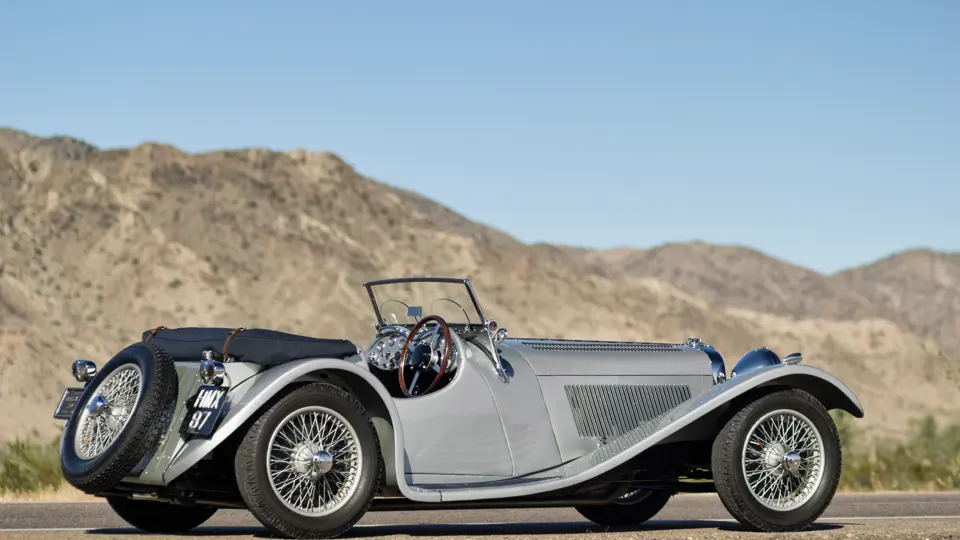




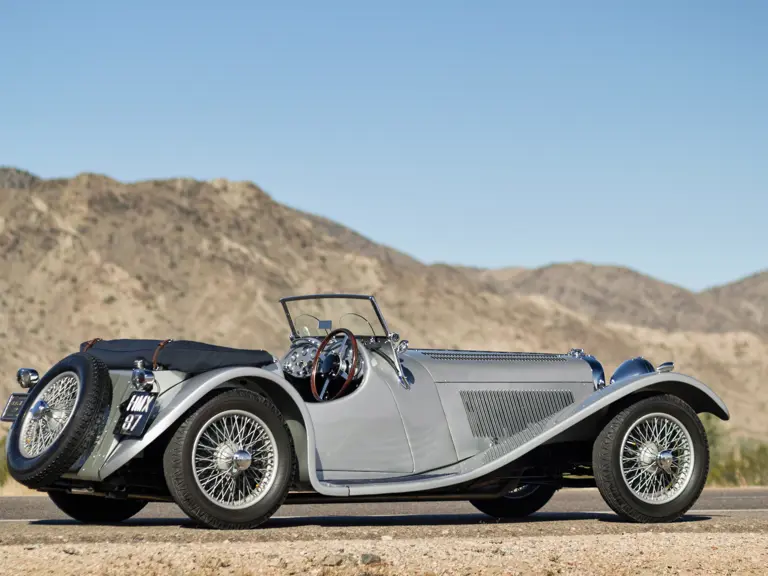
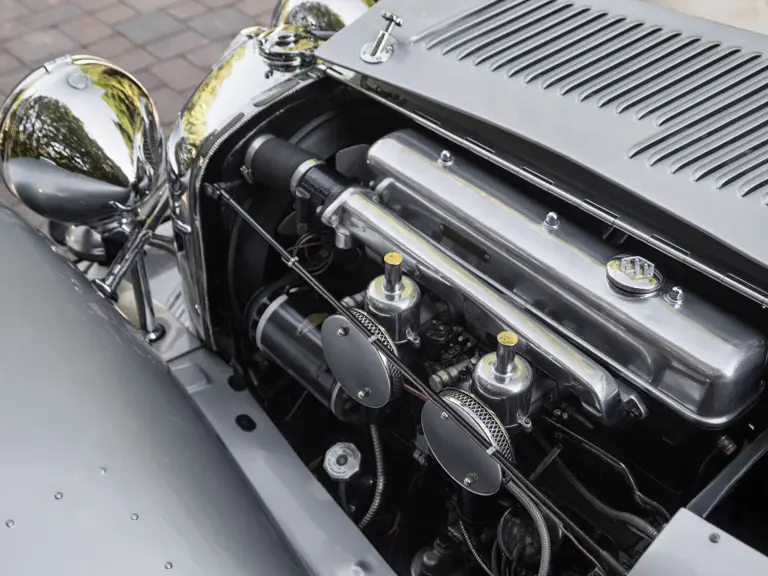

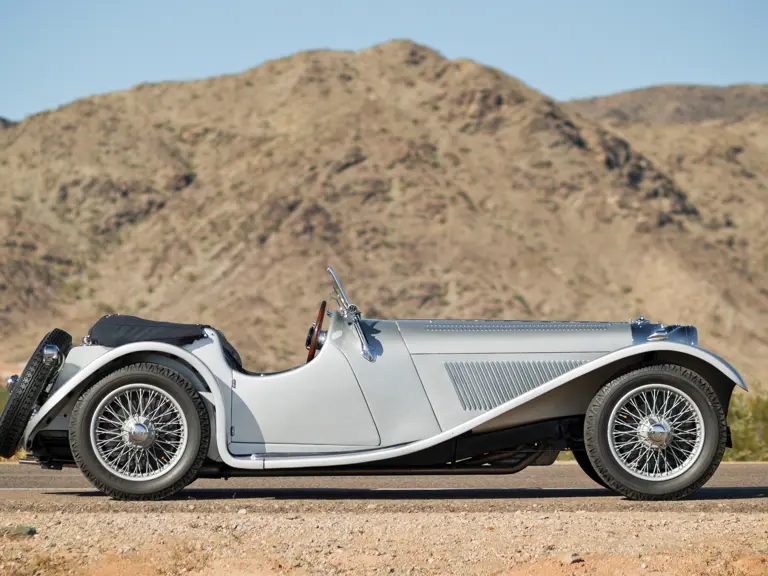

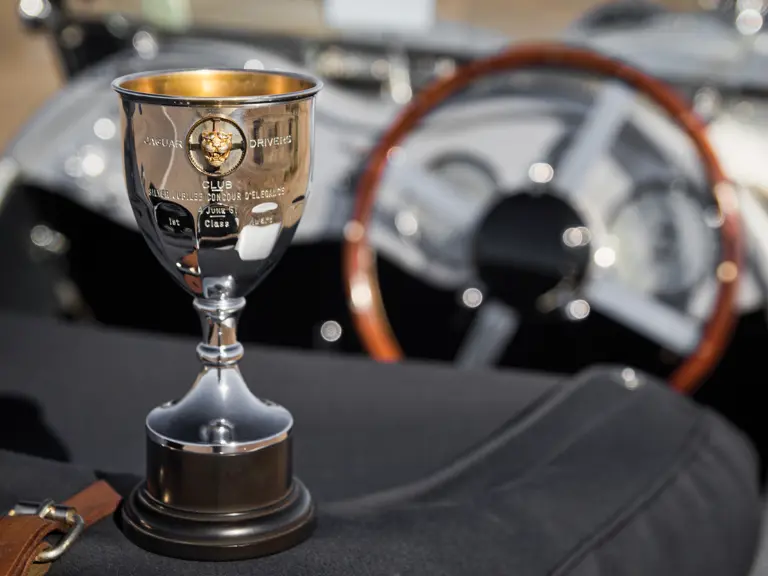
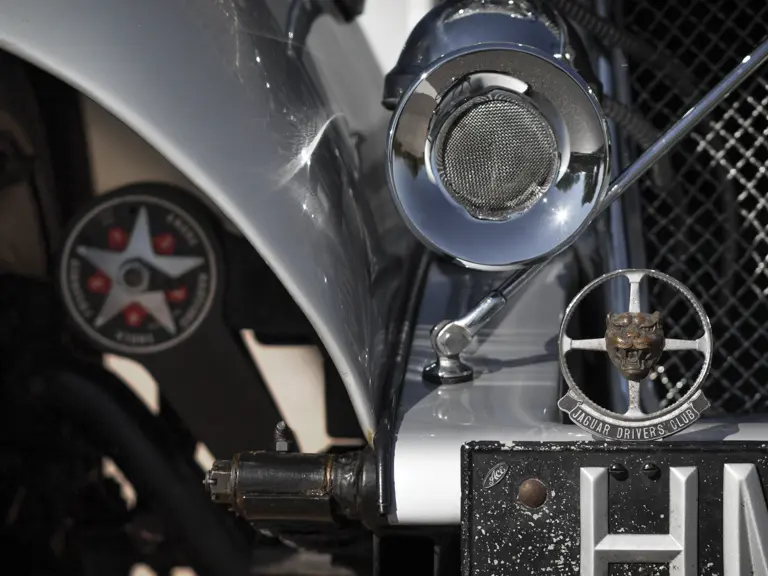
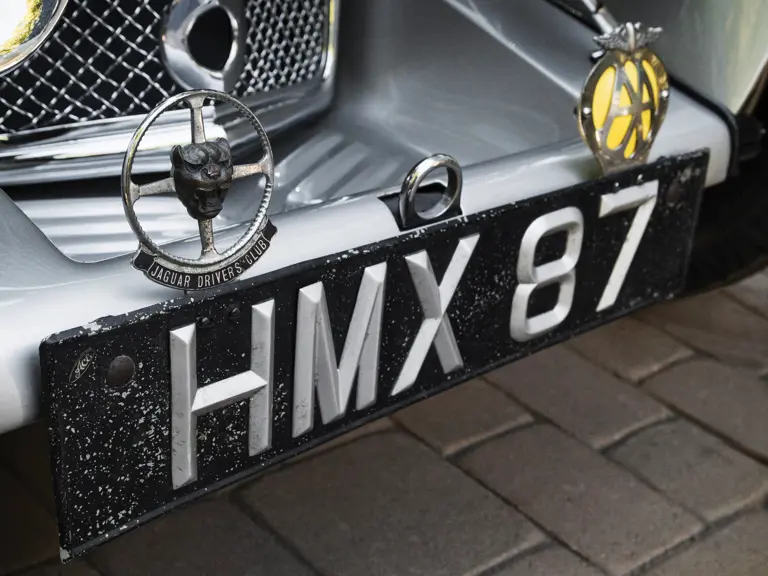


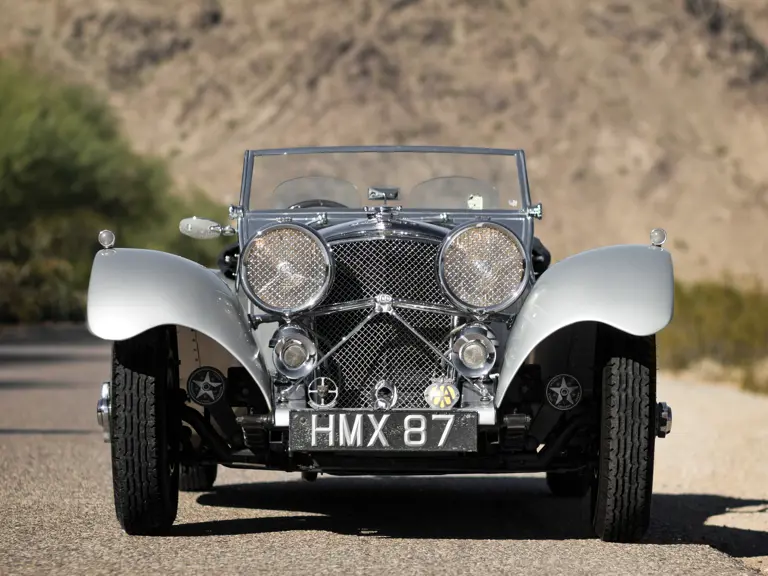
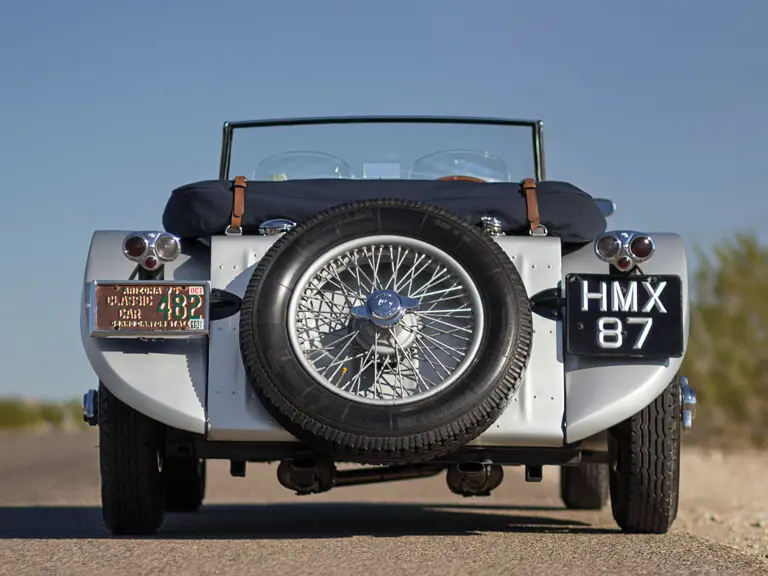
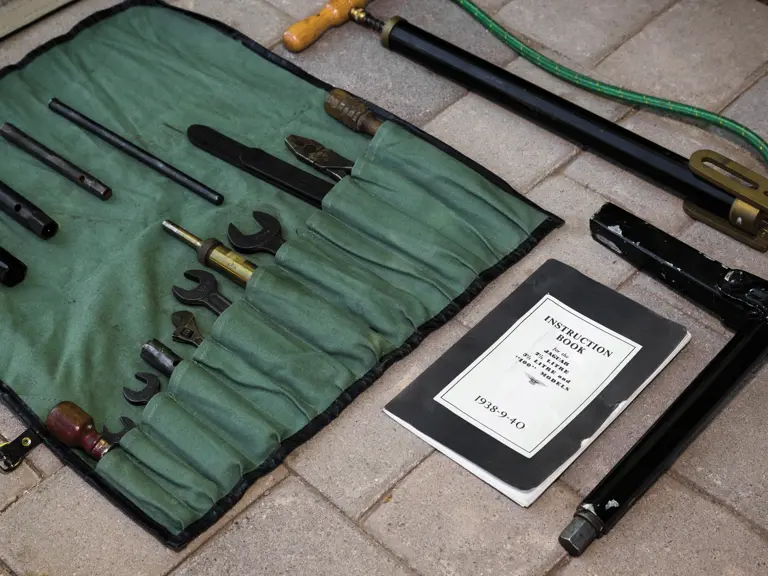
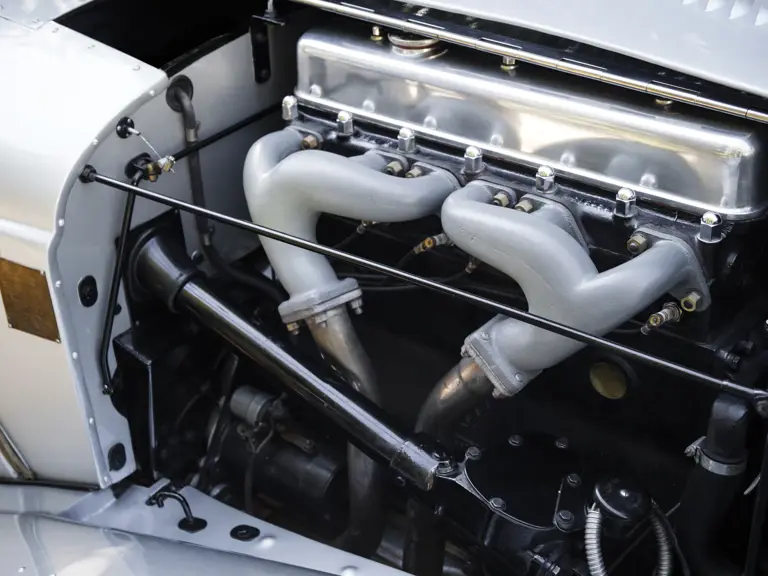

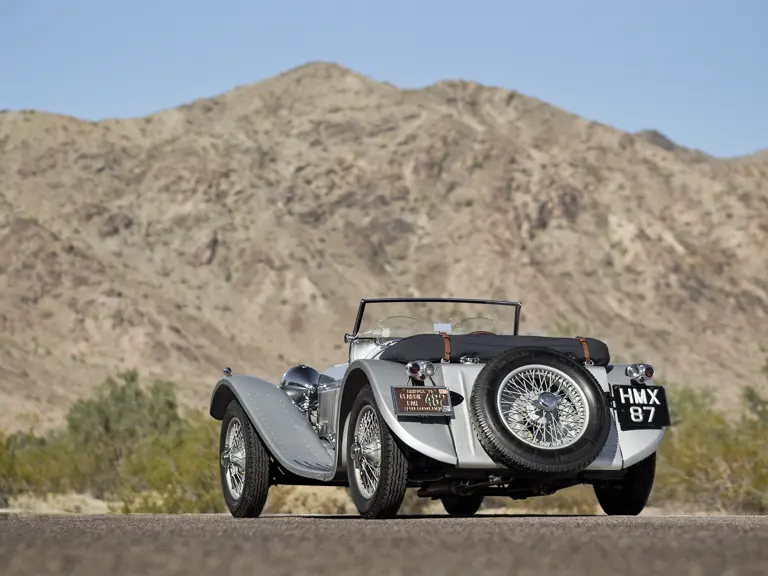
 | Phoenix, Arizona
| Phoenix, Arizona

